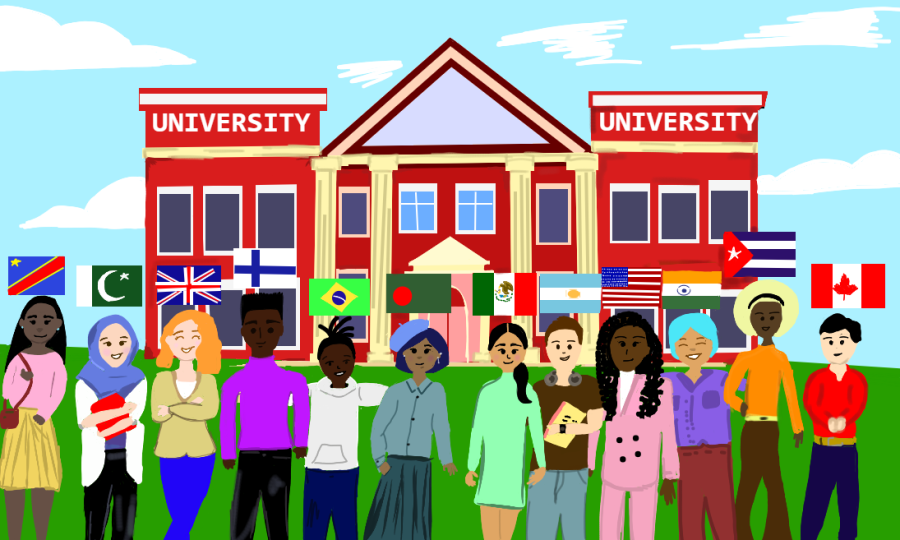Supreme Court takes action
The Supreme Court once again discusses affirmative action in colleges
Students group together outside their university after being accepted with the chance of using affirmative action in their application. Great diversity is seen in the student body.
In 1965 affirmative action in college admissions was made legal. On Oct. 31 the Supreme Court investigated Harvard University and the University of North Carolina’s use of affirmative action in their admissions process. This caused a controversial discussion on whether these institutions should keep or ban this right. It has been proven that affirmative action has been beneficial for people’s lives and college diversity on campus.
According to U.S.News affirmative action is, “the practice of considering student background characteristics such as race as a factor in deciding whether to admit an applicant.” Harvard, for example, encourages affirmative action on applications to promote student diversity. This means Harvard takes into account race when admitting students to their university, giving some students an advantage in admissions.
If it so happens that the Supreme Court rules out affirmative action there will be less diversity on college campuses which gives people of color (POC) less opportunities and less of a chance to get into a college. The Hechinger Report, a national nonprofit newsroom that solely focuses on education, states that, “we can expect campuses that may already be largely white to become even more so, and we may see a higher education system that gives Black and Latino students less of a shot.”
Many do believe that keeping affirmative action legal can do harm. As stated by The Hechinger Report, “Kids check which race they belong to and then they are judged, either affirmatively or negatively by competitive admissions offices based upon the box that they checked,” conservative activist Edward Blum said. “That is inherently unfair, that is inherently polarizing and inherently illegal and unconstitutional.” However, affirmative action has proved to do more good than harm, given that campuses are looking for more diversity.
The Supreme Court should understand that taking affirmative action away as a right would prevent the useful advantage different people need. This right would not only benefit but boost a person in need of help or a better chance in acquiring their future admission.
It is a fact that POC have less opportunities than their white counterparts. Since affirmative action has been put into play, people with a diverse background have greater educational opportunities. “ The average White family today holds more than 170000 dollars in net assets, compared with just 17000 dollars for the average Black family,” The Washington Post said. Overall, people of color have lower socioeconomic statuses compared to white people. This affects where students go to school and the educational resources available to them.
Because it can be proven people of color have less opportunities to get where they’re going, colleges use affirmative action in their admissions to make up for those disadvantages. Not only does this help students get into colleges, but it helps colleges improve diversity which is key to an educational institution.
Having a diverse community will expand student awareness, multiple perspectives and help build social skills with multiple people. Affirmative action and allowing race to be considered on college applications will impact the chances of a student being accepted. Without affirmative action there is no diverse future.

Hi! I am a junior at BVH and this is my third year on the Crusader staff. This year I am Co Editor-in-Chief and was previously an Opinion Editor and News...








